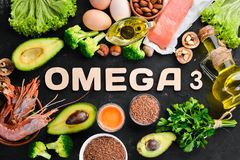PART 3 of a 3 Part Series: FATS
For the general population a good fat intake range is roughly 20-30% of daily calories. For athletes that percentage should be a bit on the higher end. But not all fats are created equally; Let’s first look at how fats are categorized:
Monounsaturated Fats
Polyunsaturated Fats
Saturated Fats &
Trans Fats
It is highly recommended that an overall healthy eating plan have saturated and trans fats sparingly, especially if athletic performance is a priority for the consumer. These types of fats are harder to use as an energy source, negatively affect the gut, and also have higher cardiovascular disease implications. Athletes, along with the general population, should focus primarily on the intake of Mono and Polyunsaturated fats, which are beneficial for general health, overall wellbeing, and performance.

Monounsaturated Fats Polyunsaturated Fats & Omegas; Take your picks!
Avocados, Walnuts
Almonds, Cashews
Flaxseeds and Chia Seeds
Soybeans
EVOO, Fatty Fish (Salmon, anchovies, sardines)
Why do active people need fats?
Fat plays a vital role in vitamin A, D, E, and K absorption, it can be a source of energy at low intensity levels, protect vital organs, and aids in hormone production. Omega 3 (polyunsaturated fats) in particular is worth noting because of its anti-inflammatory benefits, because too much inflammation can negatively impact health and performance.
While higher training loads will require more carbohydrates to supply energy it is still important for active people and athletes to include fats into daily calories. No macronutrient should be avoided, especially in athletes. Fats will not make you gain weight unless you consume too many calories.
Eating fats does not make you fat,
regardless of their sub-category.
Timing for peak performance
The specific schedule recommendations regarding the optimal timing to consume and digest fats is important when we are considering peak performance. Timing must be relative to the training or sporting event schedule. Fats are slowly digested and can make the GI track uneasy if consumed too close to training or event. Carbs would be a much better, more appropriate and functional pre-training go-to energy source for high intensity activity. Fats ideally would be consumed at breakfast or lunch, hours before a late afternoon or evening training, exercises session or sporting event.
Jennifer Noll, MS
Restore Movement Owner
484-372-3633









